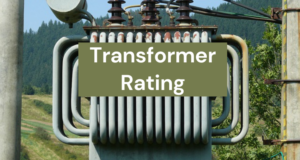Transformer life is the duration of time during which a transformer can operate safely and reliably while meeting its specified performance requirements.
Understanding the factors that affect transformer life is essential for designing, operating, and maintaining transformers that perform reliably and safely over their expected lifespan.
The factors that affect transformer life include environmental factors, electrical factors, mechanical factors, and materials factors.
These factors can impact the performance, reliability, and lifespan of transformers and should be considered in transformer design, operation, and maintenance.
Proper design, installation, operation, and maintenance practices can help extend transformer life, reduce downtime, and minimize repair and replacement costs. Let’s go into detail.
Table of Contents
II. Environmental Factors
Temperature:
High temperatures can cause hotspots, which are areas of the transformer where the temperature is significantly higher than the surrounding areas and can lead to insulation failure and decreased transformer life.
Thermal cycling, which is caused by frequent temperature changes, can also lead to mechanical stresses and premature aging.
The ideal operating temperature range for most transformers is between 25°C and 40°C.
Humidity:
Humidity can cause corrosion and insulation degradation. Moisture can reduce the dielectric strength of the insulation, leading to insulation failure and decreased transformer life.
The ideal humidity level for most transformers is between 30% and 60%. Note that humidity level for most transformers refers to the moisture level in the air surrounding the transformer.
Altitude:
Altitude can affect transformer cooling and dielectric strength. At higher altitudes, the air is less dense, which reduces the cooling capacity of the transformer.
Also, the dielectric strength of the transformer oil decreases at higher altitudes, leading to insulation failure and decreased transformer life.
Pollution:
Pollution can cause corrosion and contamination of the transformer components, leading to reduced transformer life.
Pollution can be in the form of dust, dirt, salt, or other airborne contaminants that settle on the transformer’s surfaces.
III. Electrical Factors
Voltage Stress:
Overvoltage can cause insulation breakdown and hotspots, while undervoltage can lead to increased current and overheating.
Overcurrent can cause overheating and damage to the transformer windings. The ideal voltage range for most transformers is between 95% and 105% of the rated voltage.
Harmonics:
Harmonics are high-frequency voltage or current waveforms that can cause additional heating in the transformer, leading to increased insulation aging and reduced transformer life.
Harmonics are typically caused by non-linear loads, such as computers, fluorescent lights, and variable frequency drives.
Transients:
Transients are brief, high-voltage spikes that can cause insulation breakdown and winding damage.
Transients can be caused by lightning strikes, switching operations, or other electrical disturbances.
IV. Mechanical Factors
Vibration:
Vibration can cause damage to the transformer windings and core, leading to reduced transformer life.
Vibration can be caused by nearby equipment or vehicles, improper installation, or poor foundation design.
Shock:
Shock can cause mechanical stresses and damage to the transformer, leading to reduced transformer life.
Shock can be caused by transportation, earthquakes, or other sudden impacts.
Aging:
Aging is caused by long-term exposure to mechanical and environmental stresses and can lead to insulation degradation and mechanical failures.
The ideal transformer lifespan is typically between 25 and 40 years, depending on the operating conditions and maintenance practices.
Maintenance:
Adequate and timely maintenance is critical to extending transformer life. Maintenance practices should include regular inspections, oil sampling, cleaning, and repairs as needed.
V. Materials Factors
Insulation:
Insulation is a critical component of transformers, and its degradation is a major factor that affects transformer life.
Insulation can degrade due to thermal, electrical, and mechanical stresses, as well as contamination by dust and moisture.
Regular oil sampling and testing can help detect insulation degradation and allow for corrective actions to be taken.
Core:
Core saturation and hysteresis losses can cause additional heating, leading to reduced transformer life.
Proper design and sizing of the transformer core can minimize these losses and improve transformer performance.
Winding:
Winding faults, such as short circuits, can cause overheating and insulation failure, leading to reduced transformer life.
Proper winding design, insulation, and materials can minimize winding faults and improve transformer performance.
VI. Conclusion
Transformers are critical components of electrical power systems, and their reliable and safe operation is essential for maintaining power quality and reliability.
Understanding the factors that affect transformer life is crucial for designing, operating, and maintaining transformers that perform reliably and safely over their expected lifespan.
Environmental factors, electrical factors, mechanical factors, and materials factors are all critical factors that affect transformer life and should be considered in transformer design and maintenance.
Proper design, installation, operation, and maintenance practices can help extend transformer life, reduce downtime, and minimize repair and replacement costs.
Regular inspections, oil sampling, and testing can help detect and prevent transformer failures and ensure optimal transformer performance.

